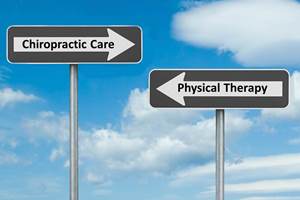Ever Wonder Who’s Really Responsible for Your Healthcare? You Are!

It’s hardly surprising that people take different approaches to healthcare depending on their situation. After all, being in an auto accident creates a different set of priorities than expecting a first child. And discovering that you have a chronic medical condition is different from recovering from a fall down the stairs. However, the themes of prevention and early intervention are becoming more and more important as society addresses the healthcare costs associated with longer lifespans and so-called “lifestyle diseases”.
Need evidence? At the level of national healthcare policy, the Affordable Care Act places a new emphasis on preventive care by requiring that certain services be covered. Many private insurers and healthcare systems are taking an even more active role in advising their subscribers about what types of tests they should get at various ages and how to manage medications for the best results. Even employers are introducing or expanding workplace wellness programs aimed at preventing common health problems.
With all of these public- and private-sector organizations involved in healthcare with a capital “H”, it’s tempting to view health and wellness as an institutional challenge—a problem for someone else to solve. But this misses a very, very important point. No one has a greater stake in your own health and wellness than YOU do! This means that no one has a stronger interest in prevention and early detection.
Reasons Your Musculoskeletal Health May Need More Attention than You Think
A variety of injuries and health conditions can compromise your musculoskeletal system, resulting in pain and reduced function of bones, muscles and joints. And the regular wear and tear we associate with aging can also reduce our strength, stamina, balance, flexibility and coordination over time. For this reason, many people simply accept the onset of back, neck and joint pain as an inevitable result of getting older. But the truth is that we do have some control over how well our musculoskeletal system ages. By adopting healthy lifestyle habits related to nutrition, exercise, sleep and regular chiropractic care, we can avoid or delay certain types of common health problems.
How Doctors of Chiropractic Help Reduce Back Pain and Restore Mobility
The spine is a complex structure that is made up of bones, joints and the surrounding musculature. Doctors of chiropractic use specialized manipulation and mobilization techniques (often referred to as “adjustments”) to restore proper spinal alignment, thereby reducing pain and restoring mobility.
Taking a Holistic View of Health and Embracing Prevention
Although your immediate motivation in visiting a chiropractor may be to get pain relief without the risks of drugs or surgery, chiropractic treatment can also improve your overall health and longer-term quality of life. Chiropractic physicians are trained to take a holistic view of health and place a very high value on prevention. In part, this is because we recognize that our patients’ day-to-day decisions and behaviors have a cumulative effect on their musculoskeletal health as well as their general well-being. Prevention is something you can do for yourself!
- Eat a healthy diet.
- Keep moving and live an active lifestyle.
- Lose weight if needed.
- Maintain proper posture while sitting and standing.
- Avoid high-heeled shoes, heavy backpacks and purses.
- Lift correctly, using your legs instead of your back. Never lift anything that is heavier than 25% of your body weight and do not twist while lifting.
- Get enough sleep.
- Don’t use tobacco.
- Moderate your use of alcohol.
- Be proactive in obtaining chiropractic care for your back and overall health
Taking responsibility for your own health—and healthcare—means learning everything you can about your options and taking action. Call or visit our office today. We can help!

 If you’re suffering from acute or chronic back pain–whether it’s been caused by an injury or some type of medical condition–chances are that you’re more interested in finding relief NOW than learning about the many different types of doctors who are part of the healthcare community. But the simple truth is that different types of doctors tend to approach their work in particular ways because of basic differences in their training and clinical experience. This means that it’s worthwhile for a back pain patient to understand at least a little bit about how a physician’s chosen discipline can influence his or her perspective and priorities when it comes to treatment.
If you’re suffering from acute or chronic back pain–whether it’s been caused by an injury or some type of medical condition–chances are that you’re more interested in finding relief NOW than learning about the many different types of doctors who are part of the healthcare community. But the simple truth is that different types of doctors tend to approach their work in particular ways because of basic differences in their training and clinical experience. This means that it’s worthwhile for a back pain patient to understand at least a little bit about how a physician’s chosen discipline can influence his or her perspective and priorities when it comes to treatment.





